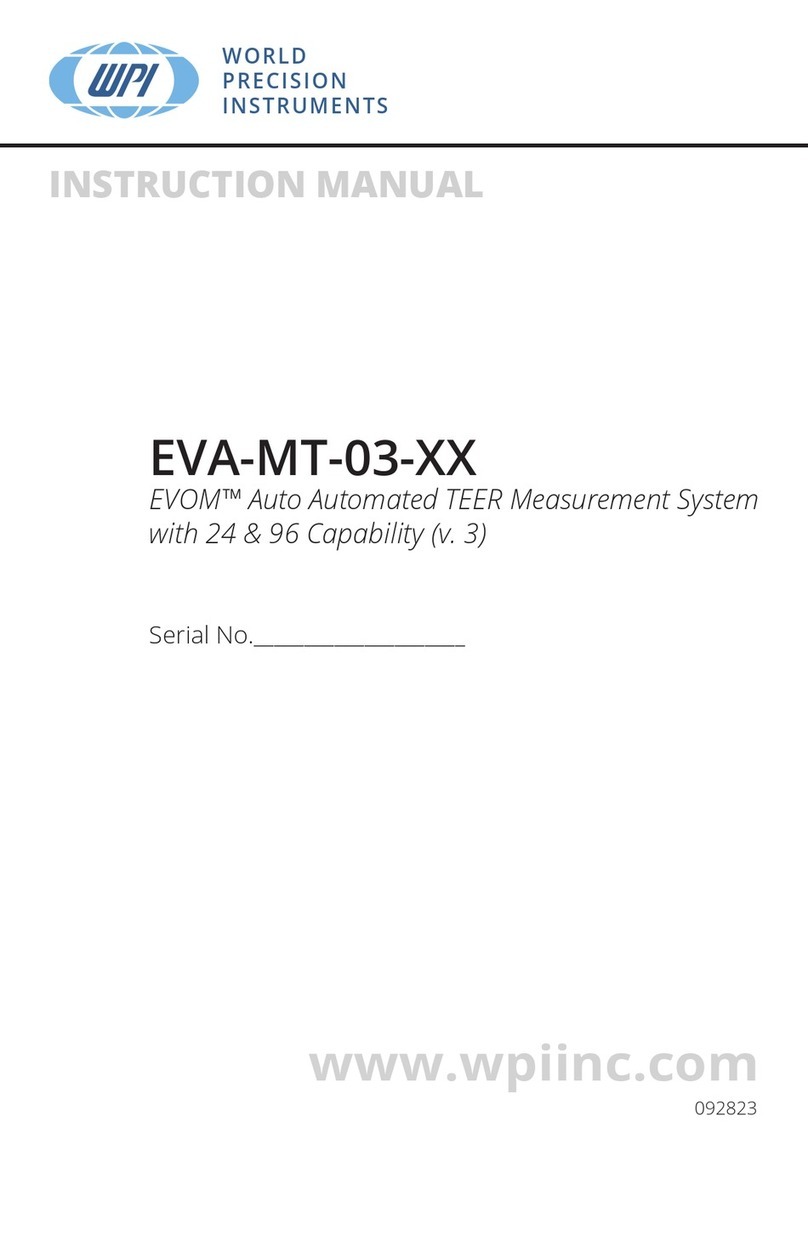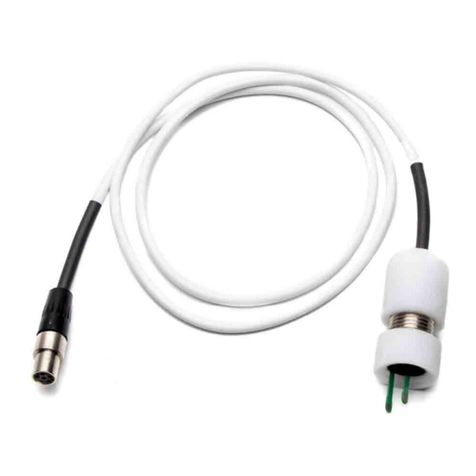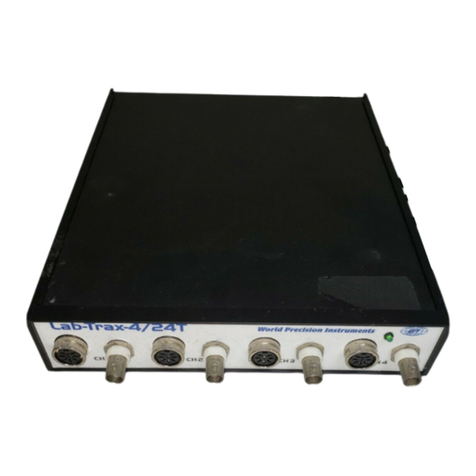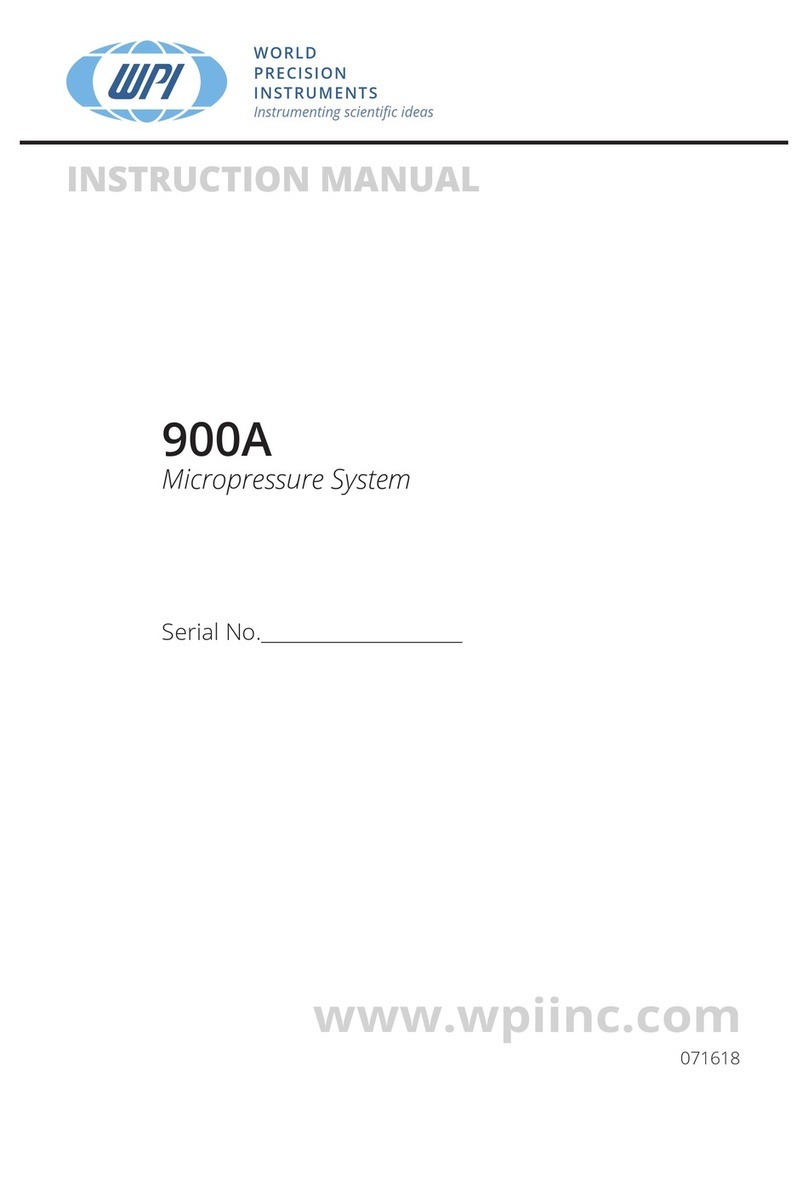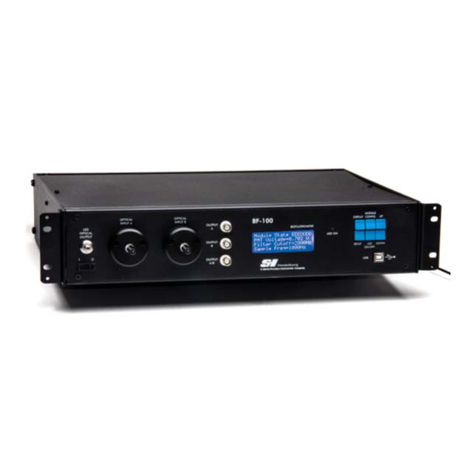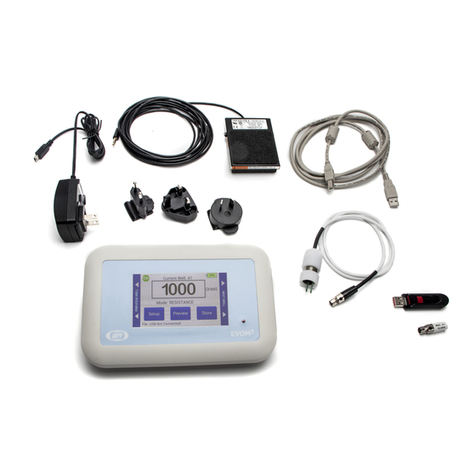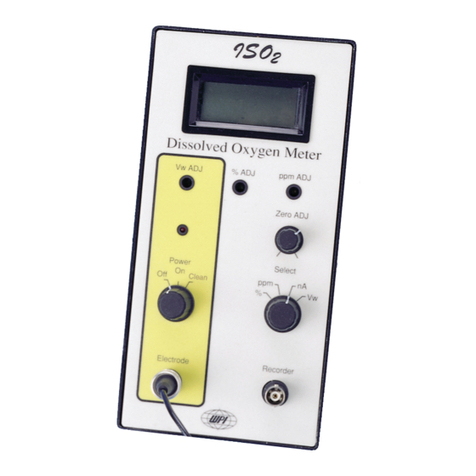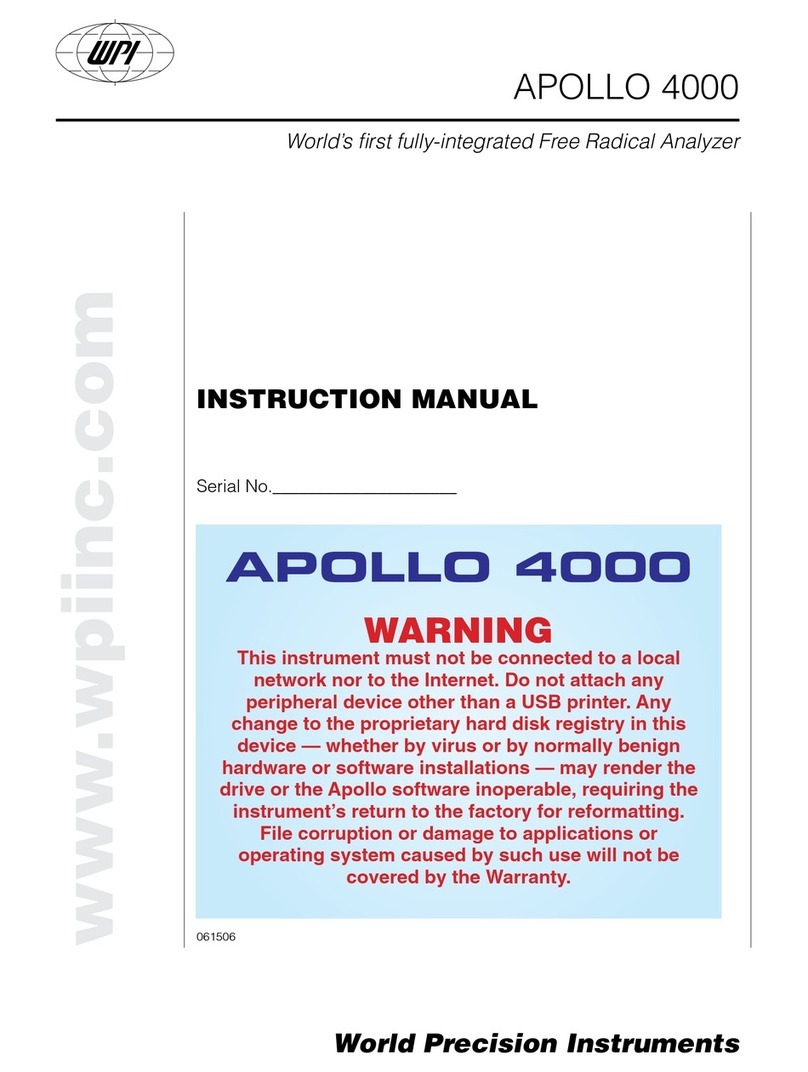
PM01, PM015 & PM100
World Precision Instruments 3
OPERATING INSTRUCTIONS
WARNING: DO NOT USE ANY OF THE PM SERIES PRESSURE MONITORS
WITH WATER OR AQUEOUS SOLUTIONS, ESPECIALLY SALT
SOLUTIONS.
Power up
Turn the instrument on by moving the On/O switch to the On position. For non-
rechargeable units using alkaline batteries, battery life is approximately 200 hours.
Rechargeable units will operate for approximately 25 hours on fully-charged nickel/
cadmium batteries. The rechargeable units can be operated continuously by
connecting the charger to the charger input, either with or without batteries in the unit.
Fluid connections
Soft tubing, such as the vinyl tubing supplied with the unit, can be slipped directly
onto the barbed ports of the Pressure Monitor. The outer diameters of the ports are
0.190” (4.8 mm), so tubing can be used with inner diameters of 1/8”, 3/16” or 5/32”.
When using pressures higher than 30 psi with the PM100, the tubing clamps supplied
with the unit should be used. Insert the tubing through the clamp, and push the
tubing rmly onto the barbed port. Screw the clamp onto the tubing at the port.
Do not apply pressures greater than the proof pressure to either of the ports. For the
PM100 the proof pressure is 150 psi (1035 kPa); for the PM015 the proof pressure is
30 psi (1550 mmHg); for the PM01 the proof pressure is 20 psi (1035 mmHg).
For standard operation, pressure tubing should be connected to Port B, which will
give readings of the correct sign, positive or negative, on the meter. Readings from
Port A will always be opposite in sign to those applied.
Readings taken using just one port are relative to ambient pressure and are termed
gauge measurements (as opposed to absolute.).
Dierential readings
For dierential readings, pressure tubing may be connected to both ports. The meter
display the dierence in pressure between Port B and Port A, (Port B - Port A).
What uids can be used?
The transducer in the Pressure Monitor is compatible with most non-aqueous fuels,
oils, refrigerants, hydraulic uids, and non-corrosive gases. Fluids must generally be
compatible with silicon gel, plastic, aluminum, RTV, silicon, and glass.













